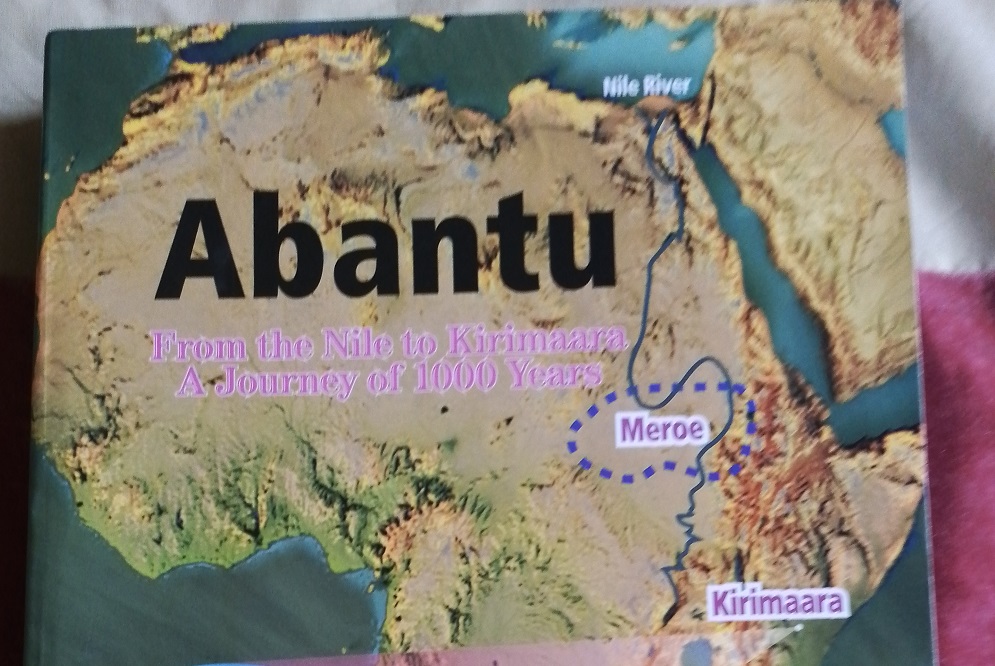Abantu
From the Nile to Kirimaara –
A Journey of 1,000 Years
By Engineer Kiruki Mwithimbu
Reviewed by John Paschal Wanyama
Jaywanyama22@gmail.com
The migration of the various Kenyan communities into the regions in which they live today has always been a fascinating chapter in their histories. The Bantu, who are a huge majority, covering large swathes of the country from the western region to Mt Kenya and down to the coast, are generally believed to have for many years gradually journeyed from the Congo Forest, eventually arriving in East Africa.
But the author of this 400-page book, Engineer Kiruki Mwithimbu, has turned this theory on its head. He has revised the history of the Abantu (people) of the Mt Kenya region, plotting their route directly from their origin in Egypt to East Africa over a period of 1,000 years.
The first section of the book, titled, Genesis, states that “the slopes of Mt Kenya, Kirimaara, have been occupied by a people of Bantu extraction generally called Andu (Antu) a Nyumba, who trace their history to 700 BC. That was the time when a powerful dynasty ruled the Nile Delta of
Misiri – present-day Egypt”. Quite curious for a discerning ear and eye is the definite echo of the name Meru in that of the ancient City of Meroe.
Kiruki’s new treatise boldly challenges the exclusive assertion of the origin from the Congo Forest. Between 1000 AD and 1400 AD, he unequivocally states, the Mt Kenya Bantu made their way from Egypt and crossed into East Africa by approaching Lake Turkana and making their way to their current location.
He writes: “This book of history is spun around common myths of origin fished off medieval archives of the Abagusii, Agikuyu, Akamba, Aembu and the Ameru, in other words, the Abantu.”
He plots their migration route from Meroe (Egypt) to Ethiopia (Abachinia) to Lake Turkana and on to Mt Elgon, from where they spread to the Lake Victoria and Mt Kenya regions.
The second section deals with the Agikuyu myth of origin, the place of the matriarch, who was later overthrown by men, enterprise, ties with the Maasai and the coming of the Whiteman. The arrival of the Europeans would lead to the establishment of the central Kenya towns of
Murang’a, Kenol, Sagana, Karatina, Nyeri and Nanyuki.
Quite interesting is the origin of the name Murang’a. It came from the Maasai ranga ranga, meaning wandering around, which echoes the Kiswahili tanga tanga. The Maasai gave the territory that later became Kenya other fascinating names. The most notable are Nairobi from
Enkare Nyrobi, the place of cool water, Naivasha (enaiposha – which heaves), Nakuru (place which is bare) and Eldoret (eldore, meaning stony river).
The Europeans created Sagana because of their inability to pronounce Thagana, the name of a river. Karatina emerged from the 1918 pandemic and quarantine. Nyeri came from the Maasai word, Nai-yer, known in Kikuyu as Karima ka Nyiri. Nanyuki came from the Maasai Enyaanyukie, meaning resemblance.
The third section is devoted to the Embu-Mbeere-Ndia and the Akamba. The Akamba specialised in trade caravans to Mombasa. Chief Kivoi wa Mwendwa gave Voi Town its name.

The story of the Ameru, also known as the Baite Nation, is told in the fourth instalment. The Meru and the Kisii, famed for their explosive tempers, are believed to have been twin brothers.
Maua Town’s name had nothing to do with flowers. The Mzungu corrupted the word maura (a cursed place). It was a sanctuary for girls who got pregnant before marriage. The Igembe ceded their cursed grove to missionaries to build a church, hospital and school.
The fifth section of this tome is dedicated to the Bantus’ Maasai neighbours, who, are known their prowess in livestock rearing and also keep wild animals at bay using their spears and other means. The Bantu of Mt Kenya owe the Maasai a tonne of gratitude for their militarism, which scared away the slave traders.
According to Engineer Kiruki, Mt Kenya got its name from the Maa phrase E-rukenya. But it is actually known as Oldoinyo Keri, meaning striped mountain. The Meru/Kikuyu called it Kirimaara. Other common Maasai-origin names are Nyahururu for waterfall, and Loresho O-
lorresho, for the scrublands on the foothils west of Nairobi. Limuru came from the Maasai word for donkey’s droppings, which is ilimur.
Since the Bantu abhorred marriage between relatives, the Kikuyu may probably be 50 per cent Maasai in the DNA, thanks to the mysterious suitors as there were no men. The Maasai gene is substantial, especially in the Imenti and Tigania clans of Meru.
Kiruki Mwithimbu is also the author of ‘Living on the Edge’ and a farmer who blogs under ‘Mkulima No 2’ banner. kirukimwithimbu@@gmail.com. Tel 0725834839
Engineer Kiruki Mwithimbu’s books are available at the following locations:
1. NURIA BOOKSHOP, Bazaar Plaza opposite Khoja Mosque
2. BookStop Yaya Centre, Nairobi
3. Mathaga Bookshop in Kikuyu
4. PEAKS Hotel in Nanyuki
Additionally, copies can be purchased at LIZAKAM Bookshop at the Consolidated Bank Building in Meru. For more information, please call 0725-834839.




